Book review: The Cosmic Dance, by Stephen Ellcock
This was meant to be a suggestion for your Christmas present list, but it's landing a little late. Oh well. Still a delightful book!
OK, when I posted a deeply personal, and ridiculously long, post about Minecraft’s End Poem over a week ago, I had no idea what would happen next. (And uncertainty is scary.) I was braced for nothing happening. (It was 10,000 words, in an age of tweets. Who was going to read it?) I was also braced for a lot happening. (Would Microsoft send the legal equivalent of a SWAT team after me?)
In the event, the response was astonishingly broad, and positive. (And led to a lot of you joining me here. Thank you.)
But writing that piece, posting it, and dealing with the aftermath, pushed a lot of things out of the way, including this very modest post, below; a short review of The Cosmic Dance: Finding patterns and pathways in a chaotic universe, by Stephen Ellcock (published by Thames & Hudson in the UK, price £25).
It was going to be my first book review for The Egg and the Rock. (I published it last month in the Irish Times – because they had drawn the book to my attention, and asked me to review it – but I figure it’s unlikely you saw my review there. Also, they were constrained by print, and just used one image; I wanted to include a few here.) And the thing is, I’d planned to put it up in time to help people who were still choosing their Christmas presents. Well, that didn’t happen. Oh well.
But I like this book a lot, and I think some of you could still enjoy it, even if you just buy it for yourself in January. On one level, it’s a straightforward visual art book with explanatory text; but, in its own way, it is describing the same universe I am.
Anyway, here’s the review…
“In the preface to this visually overwhelming, profoundly uplifting book, Stephen Ellcock describes himself as “a burnt-out, punch-drunk, middle-aged man,” whose absence of perspective, a decade ago, led him “to come apart at the seams, lose his bearings and find himself adrift in a world of pitfalls and unsprung traps, engaged in a perpetual war not only with himself but with friends and enemies, both real and imagined.”
(EDIT: So you can maybe see why this book resonated with me!)
The Cosmic Dance is the astonishing result of the ten years he spent regaining his perspective: “a quest to find his place in space.”
He reconnected with the world, and indeed the universe, through images; “the infinite archive of images that was suddenly and freely available online.”
And so The Cosmic Dance collects the best of the best of these images, from across all of space and time, and culture. Woodcuts, photographs, seashells, blueprints, ceremonial carvings, x-rays, oil paintings, alchemical texts, carved rocks, and woven blankets mingle here with promiscuous glee. Throughout, Ellcock’s curation of these images is a marvel of sympathy. A German 16th century castle stairway calmly mirrors the stone spiral of a fossil snail.
A modern English crop circle is put in animated conversation with an ornate Italian church cupola.
A 1930s photograph of sliced onions by Midori Shimoda – a dream of silvery, circular, stillness – lies opposite an ink drawing of waves by Louise Bourgeois – a nightmare of jagged, spike-tipped, frozen rage.
They balance each other perfectly. You could look at that two-page spread for an hour, as it deepens and resonates. It is a visual koan.
(Edit: Yeah, I really love those two images. Let’s paste them in again, separately and right way up, so they’re a little bigger.)
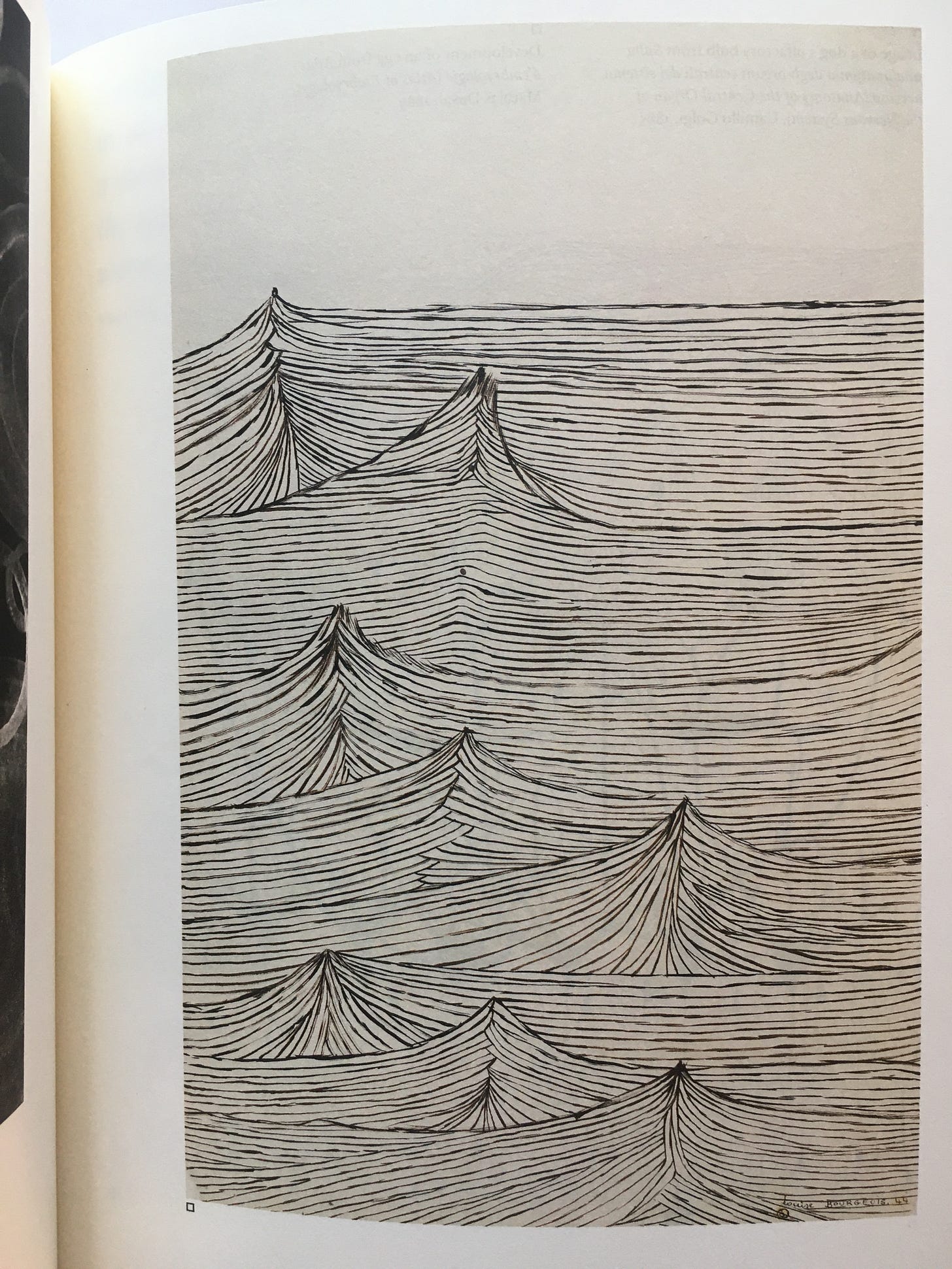
Meanwhile, the book’s accompanying text marches you briskly through a magnificent number of the world’s mythologies, religions, philosophies, arts, and sciences, drawing connections and noting similarities.
The images, though exuberantly unpredictable, are not random: the book has an arc, from microscopic to macroscopic. Starting with the fizz of the subatomic, and the rapid pulse of the bacterial, it leads you gently outward and upward, through the intermingled realms of humans, animals, and plants, past the stately spinning planets, beyond the galaxies that take a billion years to rotate just once, until you are gazing upon the universe as a whole; the mysterious organism that generates all these marvellous moments at every possible scale.
There are points where you can get a little dizzy, a little lost. Am I looking at a computer-generated mathematical fractal, or the intricate blue ceiling of a mosque?
Crystallised ascorbic acid, or the antenna of a moth?
Finally, you realise that these questions don’t matter. Everything here, seen at the right scale – zoom in enough, zoom out enough – is alive, and significant, and beautiful. As Annie Dillard puts it, in one of the many marvellously chosen quotations that pepper the book, “Crystals grew inside rock like arithmetic flowers.”
If you know any punch-drunk middle-aged burnouts, buy them this book for Christmas. Give them the gift of perspective. Maybe even save their life.”
OK, that’s the first book review here! Tell me in the comments if you are interested in more.
Basically, in among my more scientific posts, I plan to occasionally review books that seem, in some way, to enrich the way we think about, or look at, the universe – whether those books be fiction, non-fiction, hard science, poetry, or, as here, visual art. (Some will be old, some will be new.)
That’s it; have a great Hanukkah, and/or a very merry Christmas! (Solana and I will be having both, plus maybe some Irish pre-Christian/pagan stuff around the solstice; highly recommended! There are many ways to shine a light in the darkness. Line them all up just right, and the holidays can go on forever! )



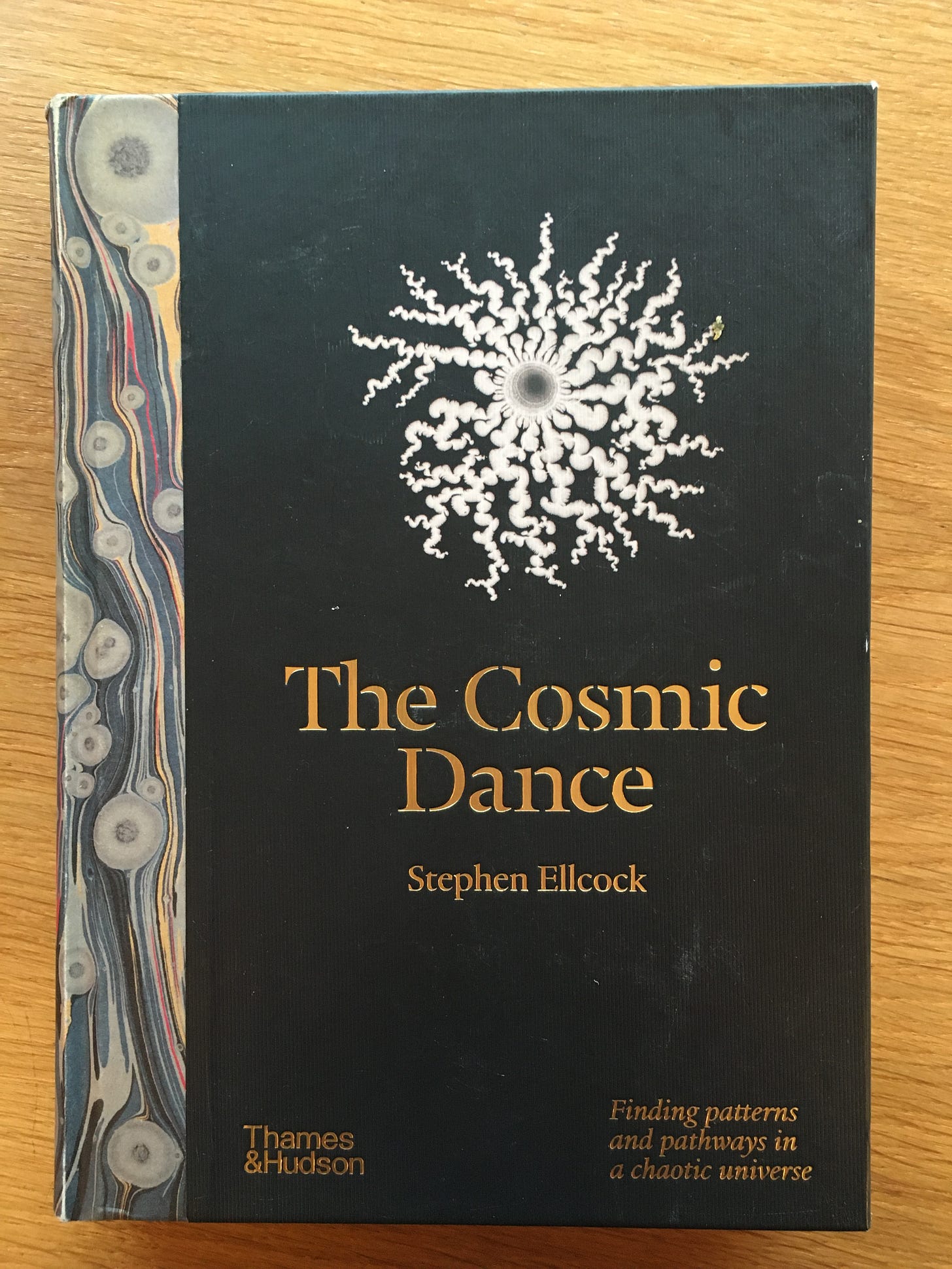


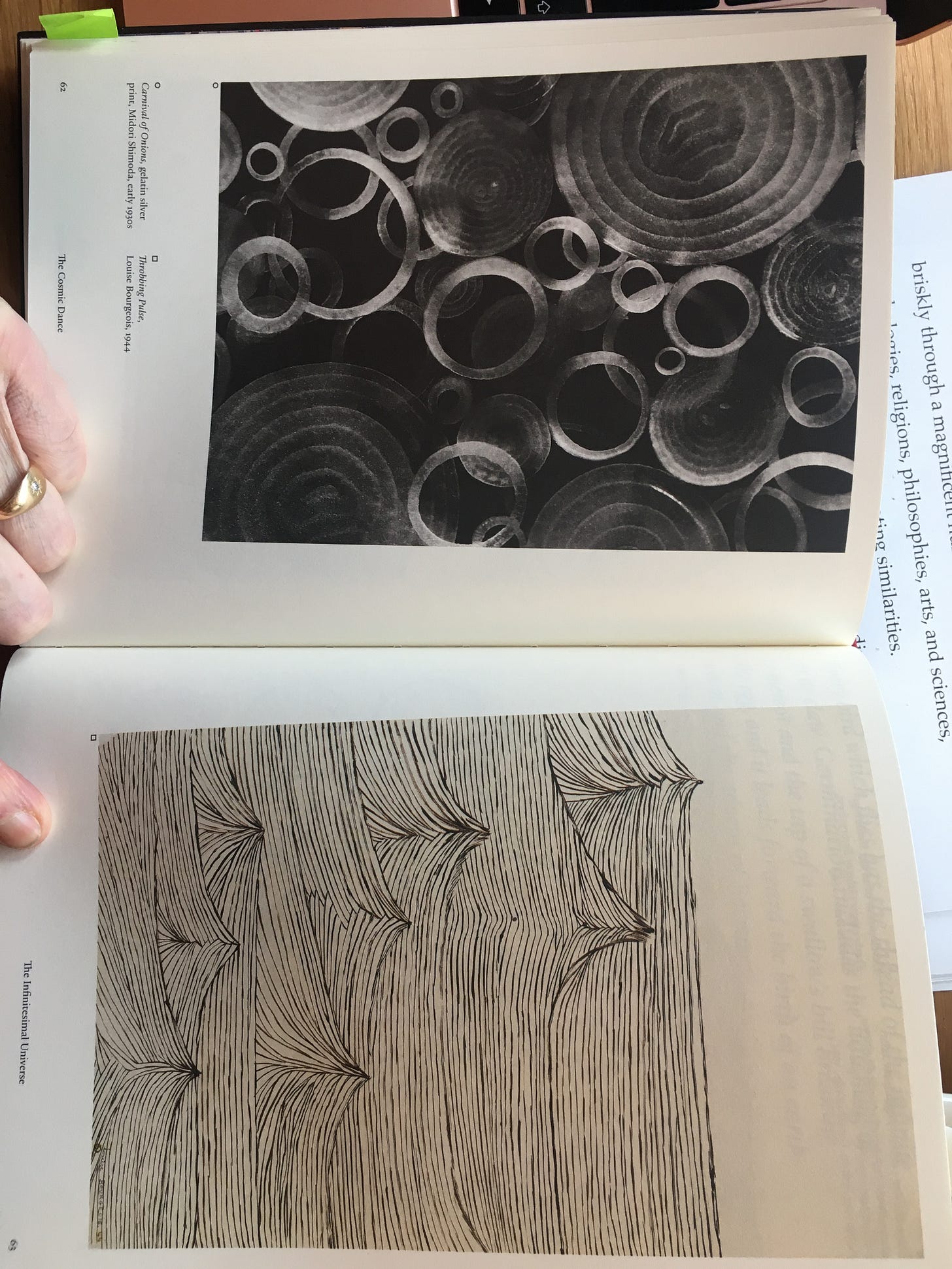
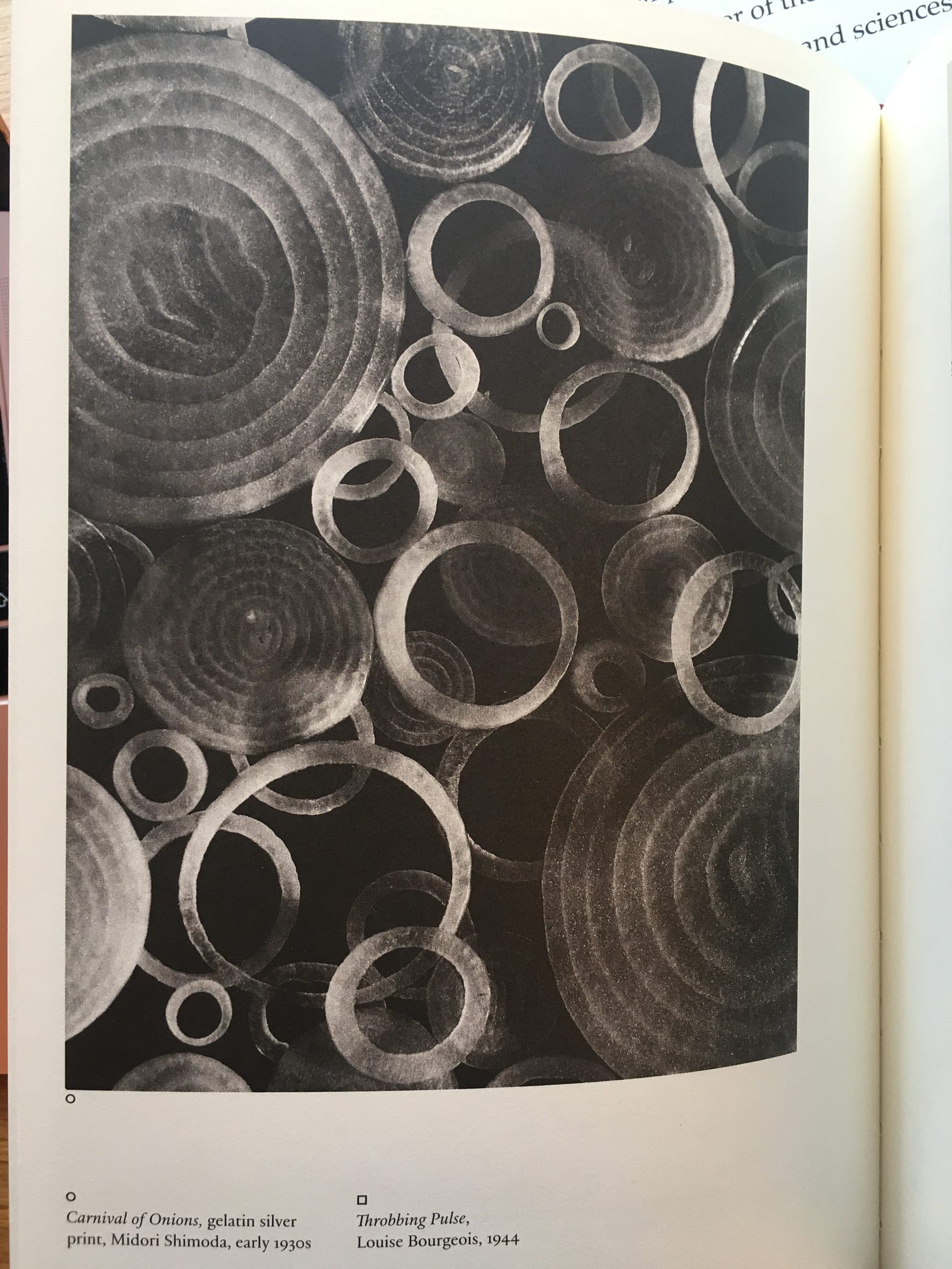
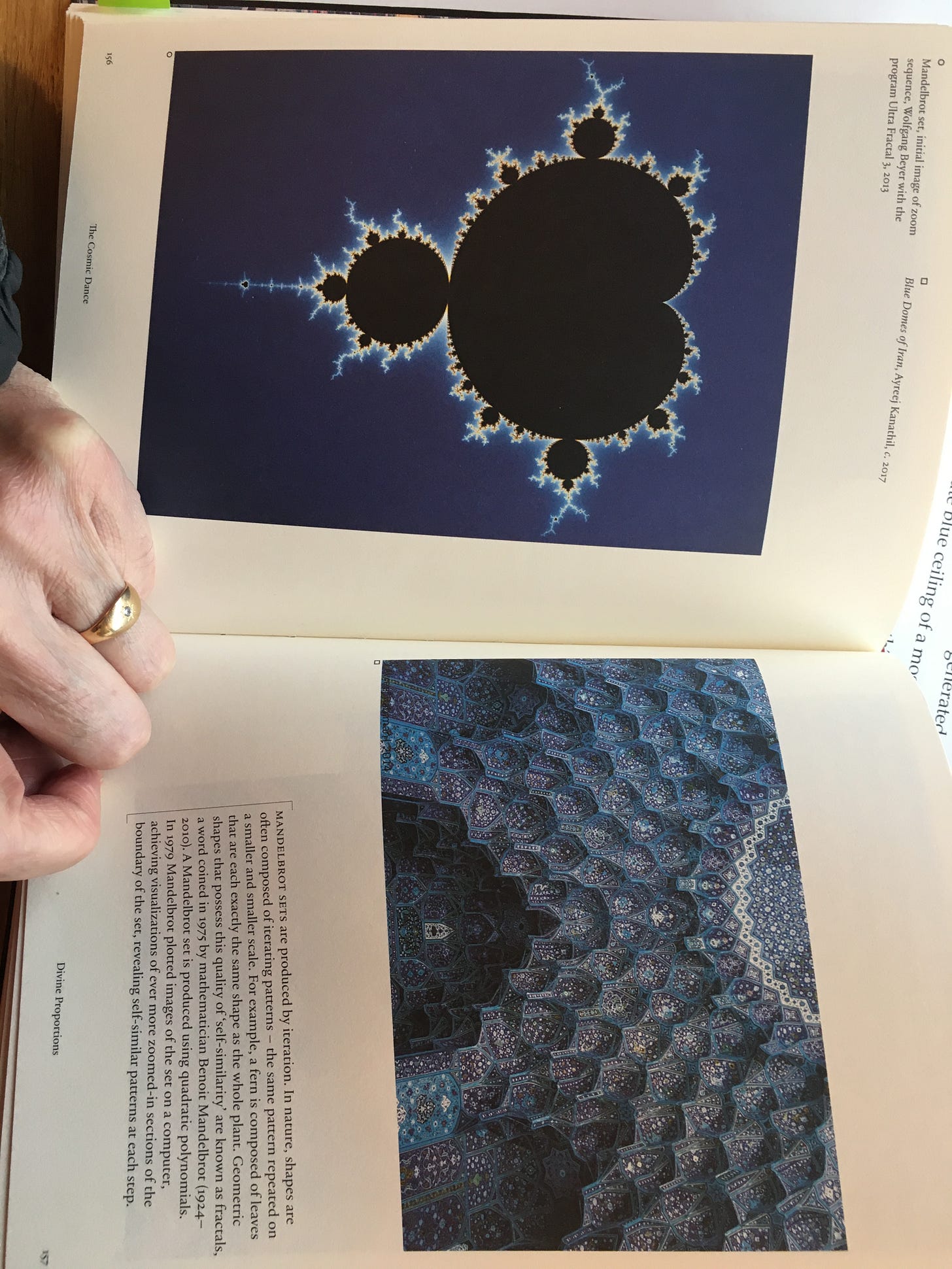
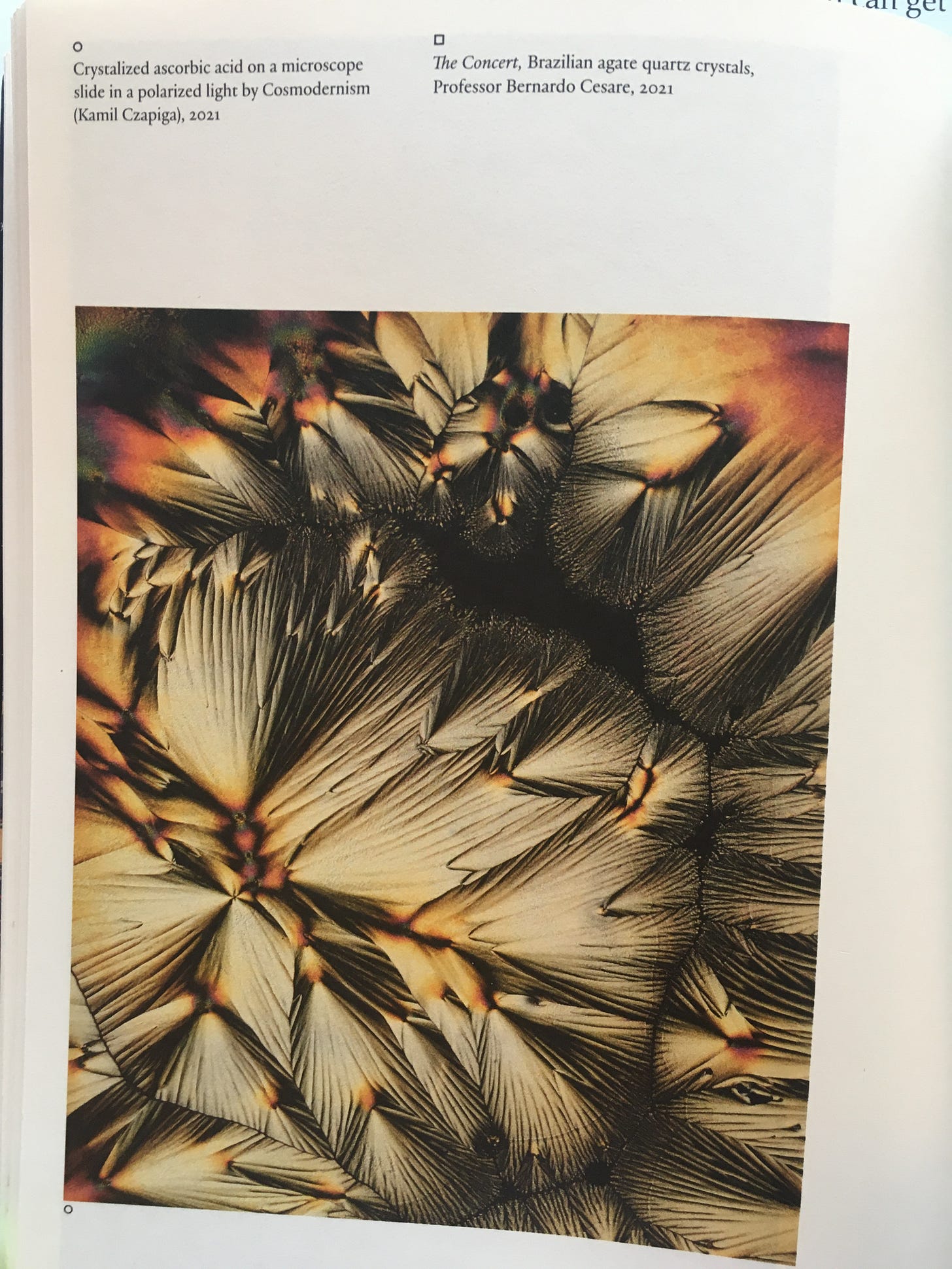
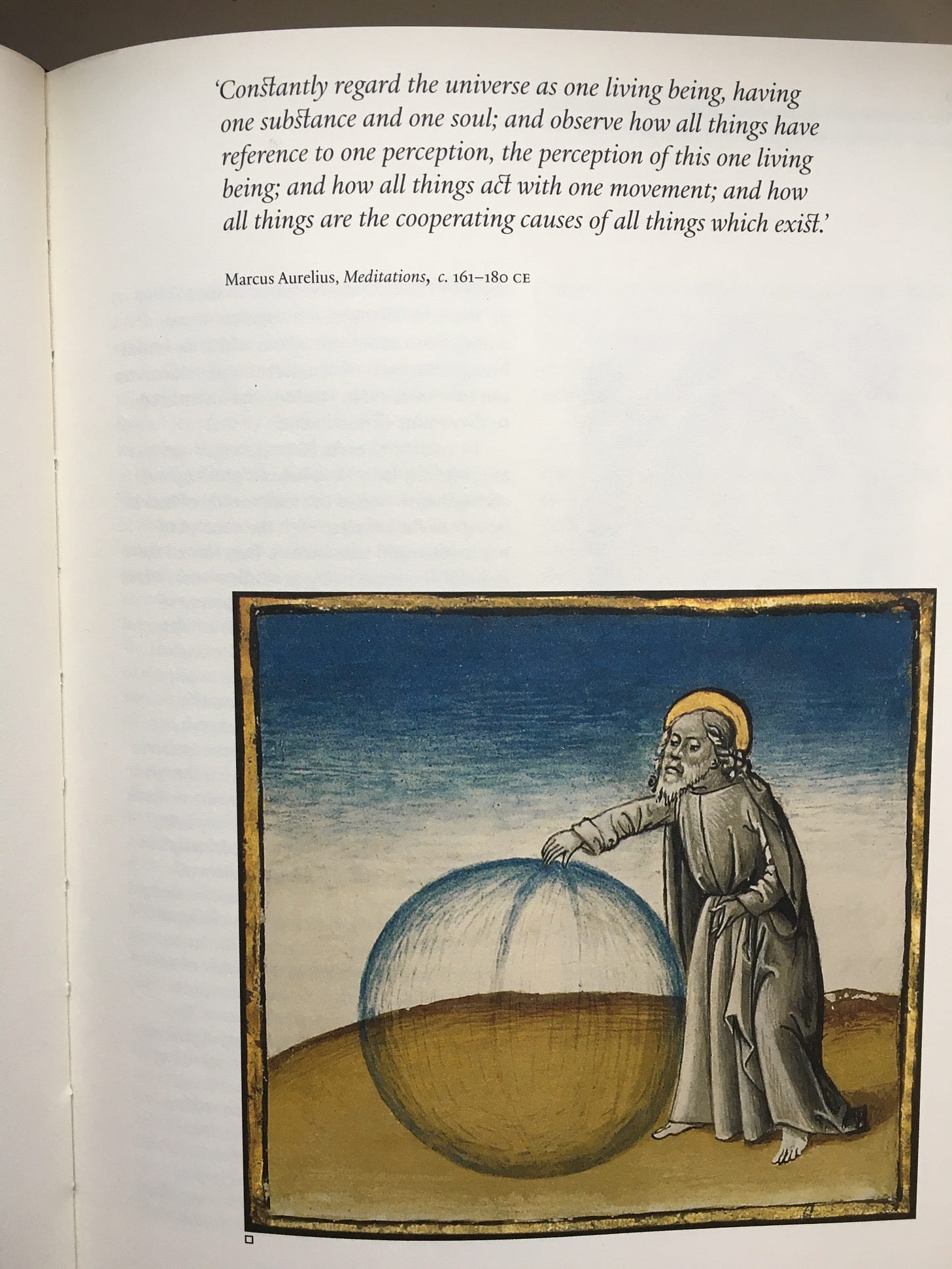
I'd love to hear more about "Irish pre-Christian/pagan stuff around the solstice" - sounds like a really fun way to spice up the holidays!
Yes please keep doing book reviews. I like the way you look at things.